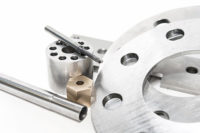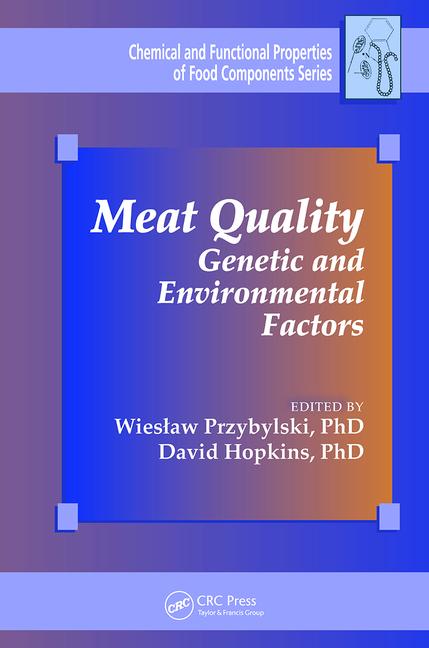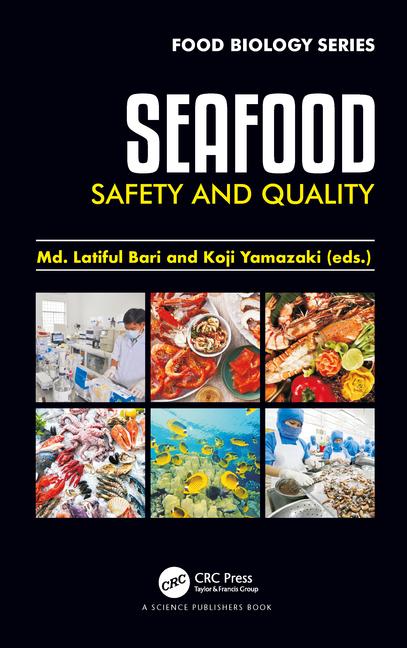Marinades Go High-Tech
By Megan Pellegrini, contributing writer
In an era of food recalls, processors want to make sure their injection, tumbling and marination equipment is accurate and easy to clean.
Today’s injection and marination equipment for enhanced products is so high-tech and creative that it could have come straight out of the set pieces on “Charlie and the Chocolate Factory.” Sleek stainless steel, these injectors, tumblers, massagers, vacuum stuffers and dissolvers operate at high speeds with more accuracy and — most importantly — less risk for contamination than their predecessors. With a recent barrage of food recalls, meat and poultry processors want to be reassured that this step of the development process, at least, is pathogen free.
Pre-marinated or enhanced products sitting in the ready-to-eat case at grocery stores most likely didn’t come out of a homemade recipe in the backroom, but have been injected, tumbled or massaged with a brine composition that adds flavor, the right amount of “chewiness” and a longer shelf life. This high-tech approach to flavor enhancement is used in foodservice and retail to provide consistent, safe results.
The key to good injection and marination results is to first prepare the brine mix in an accurate manner. Ingredients need to be dissolved correctly and precisely to ensure optimum results, notes Chris Mason, vice president sales and marketing for Wolf-tec Inc., based in Kingston, N.Y.
To help, suppliers are offering a variety of mixing and chilling equipment for processors of all sizes. Wolf-tec’s Polar Dissolver Brine Systems, for example, provide equipment that ranges from basic configurations to custom and fully automated systems that integrate functions such as temperature control, ingredient scanning, auto-sequencing, automated ingredient introduction, weight verification and operator decision support, says Mason.
The Polar Dissolver’s tank design provides a maximum surface area for cooling. Unlike other mixer/chillers available, these tanks are jacketed, insulated and covered on the outer walls to ensure the brine, and not the room, is cooled to the right temperature, says Mason. A stainless-steel transfer pump moves the finished solution to the required destination, and a modular piping design enables additional units to be added seamlessly.
“The highly polished stainless-steel base also allows it to be cleaned quickly,” he says.
Wolf-tec’s Polar Dissolver is offered as a single mixing tank for mixing, chilling and delivering brines, including an ingredient hopper and eductor for easy dry and wet ingredient additions, or as a companion holding tank for brines to be stored before they are transferred to a mixing tank.
After a processor has perfected its brine or marinade recipe and establishes the correct pump level, it then becomes the job of an injector to deliver the formula consistently from batch to batch, day after day.
Multi-port brine-delivery systems can ensure a uniform piece-to-piece accuracy for bone-in and boneless applications. Wolf-tec’s IMAX Brine Injection and Marination Systems, in fact, reach injection rates of 3 percent to 100 percent and production capacities of up to 40,000 pounds per hour.
“These injectors have unparalleled injection distribution and consistency,” says Mason. The IMAX’s sanitary design also allows it to be cleaned up to six times faster than other injectors, says Wolf-tec promotional materials. Its Top-port needle feed system prevents needle clogging, even on the most thick brine and slurry solutions. And its Angular needle technology is reported to increase quality and yield benefits on low-profile items such as bacon.
To further-process whole-muscle products, suppliers are offering massagers with unlimited adjustment capabilities. Wolf-tec’s Polar Massager, for one, uses paddles to provide a quick, uniform distribution of ingredients throughout the whole muscle without affecting product integrity. In addition, its Temperature Guidance System controls the heating and cooling process, reportedly improving product color, protein extraction and moisture absorption while enhancing product yields.
“As opposed to tumbling systems, which don’t dissipate heat very well, we transfer our product with paddles inside the tanks so everything remains temperature-controlled,” says Mason. “Also, the product can be vacuum-loaded into the massager in a clean, efficient manner.”
Happy (and productive) feet
Stripper feet can also play a key role in controlling the product during the injection process. The purpose of the stripper foot or plate in the injection process is to remove product from the needles following injection.
According to David Howard, regional manager for Reiser’s Fomaco division, based in Canton, Mass., his company’s equipment utilizesindividual stripper feet to not only remove the product after injection but to control the product during injection.
“This gives the best possible needle pattern resulting in the most consistent method of injection,” he says.
In addition, Fomaco injectors combine each individual stripper foot with an individual brine valve. The valve will only activate when the individual stripper foot contacts the product. So, injections will only occur when the needle is in the product, thereby reducing the quantity of return brine or marinade considerably, says Howard.
New generation Fomaco injectors are also equipped with pneumatic control of the individual stripper feet. Low pressure is utilized to control the product during injection, and high pressure to remove product as quickly and cleanly as possible.
To prevent the fine holes in the needle from becoming blocked, even after hours of production, Fomaco injectors employ an FM80 self-cleaning filter. This component ensures a consistent distribution of the brine/marinade and no stops in production for manual clean-up of the needles.
“All injector systems make use of a filtration system,” notes Howard. “Others rely on an operator to stop what they are doing and manually remove the filter for cleaning. Often, this means a stop in production.”
Food safety and hygiene are also emphasized in the development of Fomaco injectors. A pump-in-pipe brine flow delivery is designed to accurately match the liquid flow rate throughout the system. This eliminates the need for a manifold, which must be disassembled frequently to remove settled debris and prevent bacteria buildup.
According to Howard, the Fomaco injector is easy to clean because everything is manufactured in stainless steel and food-approved plastic materials. The machine itself is self-draining by virtue of the pump position. The pump and the entire brine system are easy to take apart, with the joints mounted with accessible fittings.
Needles can also be dismantled and fitted quickly without the use of tools. In addition, the popular Intralox conveyor comes equipped with a quick-release system and can be pulled out of the infector without the use of tools, says Howard.
Making cleaning easy
Another big innovation of the past year has been making the injector needles easy to remove for cleaning, says John Sbraga, chief executive officer, Nu-Meat Technology Inc., based in South Plainfield, N.J. Needles today can be removed in groups of 40, for example, instead of being plucked out one at a time and then reinserted individually. Piping components in the machines can also be removed and easily dissembled for cleaning, he says.
“The biggest consideration for processors is to be able to clean their machines faster and more in-depth,” says Sbraga. “They are driven by preventing product recalls — destroying pathogens and associated food safety problems.”
Specially designed for marinating boneless or bone-in meats, such as pork, beef, whole birds or poultry parts with an automatic spray system, Nu-Meat’s Auvistick Bone-In/Boneless Injectors are capable of reaching up to 910 injection points, using all types of brines and marinades. This system should enable an even distribution of the brine or marinade with no “dead zones” and a minimum of brine dripping loss. The program also contains an automatic filter of the brine/marinade, and provides an easy assembly and disassembly, cleaning and sanitation mechanisms.
Nu-Meat’s Thermomat 2X automatic vacuum reactor’s massaging system also provides great versatility, and facilitates the diffusion and cellular absorption of the injected brine into the product through an ordered and precision-controlled maturation.
“We will continue to see more accurate machines operating at high speeds,” says Sbraga, “with easily cleanable machines.”
He points out that the stainless-steel materials used today have a smoother, mirror finish, so they are less likely to harbor pathogens and are easy to clean. In the future, he predicts these surfaces will also contain an agent that inhibits pathogens.





Report Abusive Comment